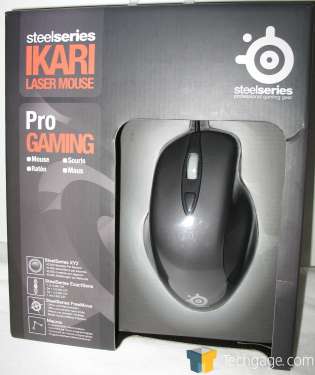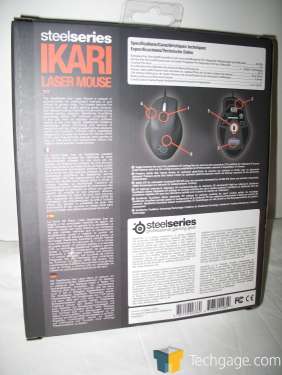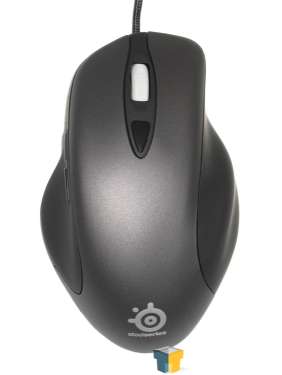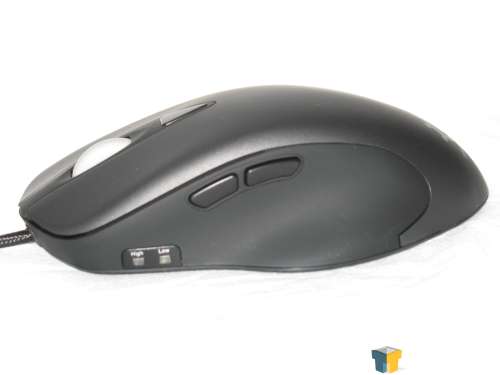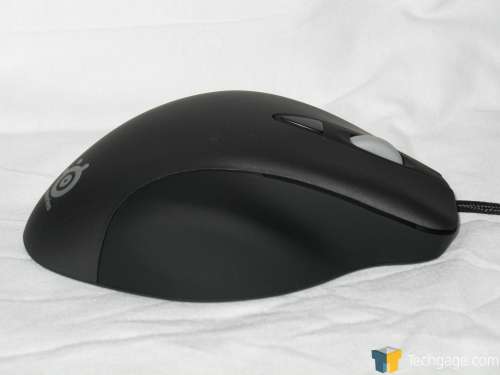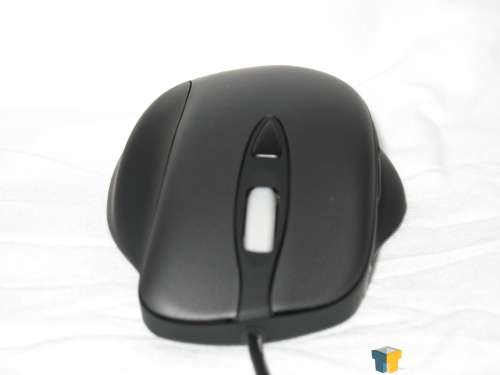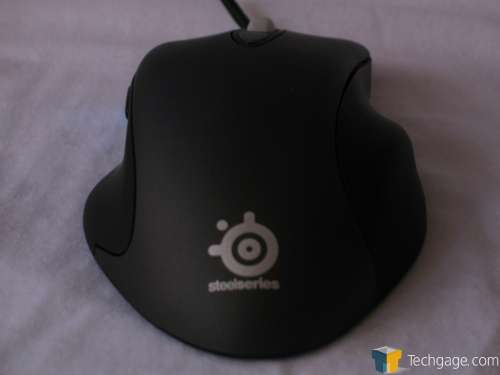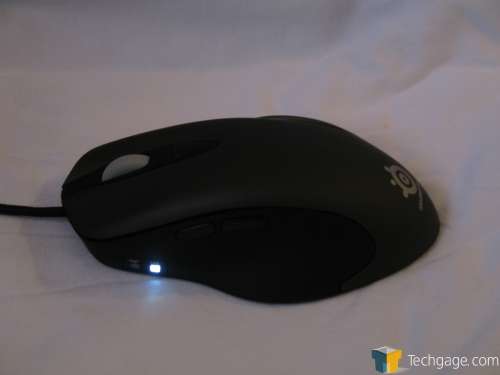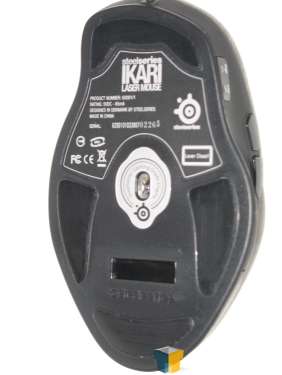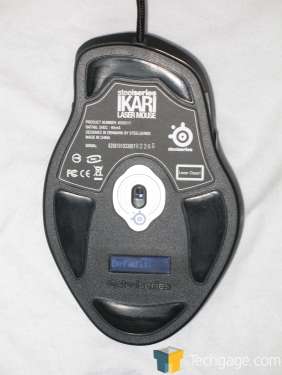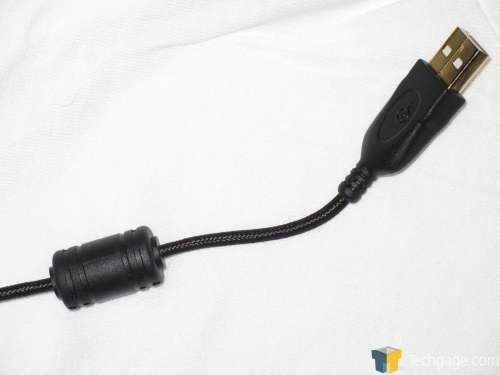- Qualcomm Launches Snapdragon 4 Gen 2 Mobile Platform
- AMD Launches Ryzen PRO 7000 Series Mobile & Desktop Platform
- Intel Launches Sleek Single-Slot Arc Pro A60 Workstation Graphics Card
- NVIDIA Announces Latest Ada Lovelace Additions: GeForce RTX 4060 Ti & RTX 4060
- Maxon Redshift With AMD Radeon GPU Rendering Support Now Available
SteelSeries Ikari Laser Mouse
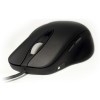
SteelSeries feels their competition is doing things wrong, but does that mean they are doing things right? After taking a look at their Ikari laser mouse, we can wholeheartedly say “yes”! The Ikari is catered for gamers, and it shows. Simply put? The Ikari is the best mouse we’ve ever laid our hands on.
Page 1 – Introduction
|
|
Many of our readers may be familiar with SteelSeries through the highly praised 5H headset, mousing surfaces, or their keyboards. SteelSeries has been steadily building a rapport with professional gamers across the globe over the past few years by developing products specifically designed to improve gaming performance and usability without a lot of extra bling.
Last September, the guys at SteelSeries dropped a bomb on the gaming mice market. Apparently, seeing companies making products with pulsing lights, variable weight systems and a bazillion DPI resolution (selectable in increments of 400) and telling gamers “This is just what you need to be totally awesome!” finally made someone at SteelSeries’ head asplode. That, or they finally tried to sit through the entire intro to Victory Road. Regardless of the source of SteelSeries’ anger, the announcement of the Ikari laser and optical mice (and their revolutionary features) had a lot of people anxiously waiting.
Today, we’re able to experience the physical manifestation of SteelSeries’ anger for as little as ~$35 (optical) and ~$55 (laser), which means that not only do these mice have the potential to be the most useful gaming mice available, but also some of the least expensive. So today, we’re going to be examining the SteelSeries Ikari laser mouse to see what kind of functionality it really offers, and maybe we’ll find out if engineers work better when they’re mad.
Closer Look
The packaging is understated and clean, and highlights the main features of the Ikari on the front of box. Considering how revolutionary some of the features are, it’s good that there aren’t any distractions or marketing rhetoric competing for consumer’s attention. The back of the box details the more general features, while the sides of the box display the logos of some of the many gaming teams sponsored by SteelSeries.
The specifications are as follows:
- Samples per second: 40.000
- Inches per second: 50
- Counts per inch: 1 – 3.200 (1 CPI Steps)
- Acceleration: 20 G
- Sensor data path: True 16 bit
- Lift distance: 0,07 inch
- Buttons: 5
- Cord: 6.5 ft (braided to improve durability)
- Polling: 1000 Hz
- Gold-plated USB connector
- Measurements: 5,1 x 3,3in – height 1,4in
- CPI high/low indicator
- SteelSeries FreeMove Technology
- Large pressure points that reduce friction for optimized glide
- Driverless, plug-and-play feature for LAN gamers
- Operating systems: Win XP/Vista/Win 2000/Win 98/Win ME/Mac OS
The feature list is where things get very interesting. While the Ikari may not be breaking any paradigms in terms of looks, SteelSeries has taken several fundamental functions of mice and drastically improved them for gaming purposes. SteelSeries’ Fragyou! post explains things fairly comprehensively. I’ll give a quick breakdown here and get more detailed later.
| Programmable macro buttons with driverless plug-and-play feature |
No drivers are required to use the mouse or set the CPI (DPI) sensitivity. Drivers are required to program macros and special button functions, but once the macros are set, the Ikari’s on-board memory stores the macros so that the customized mouse can be used on any PC without drivers.
|
| 40,000 samples per second (SPS) for unbeatable tracking |
SteelSeries have designed a chipset that can perform image correlation calculations with much fewer inputs than other chipsets, allowing the Ikari to check for motion more frequently
|
| 3.200 CPI (changeable in increments of 1) |
Instead of toggling between DPI settings, (1200, 1600, 2000, etc) users can set the Ikari’s sensitivity from anywhere between 1 to 3200 DPI in increments of 1. Users can select two sensitivities (high, low) in this way, and toggle between them with a button on the mouse. This feature allows gamers to get the finest sensitivity tuning that has ever been possible on a mouse.
|
| Built in LCD display to help set CPI values on-the-fly |
In order to change the sensitivity settings (high, low) without the use of drivers, an LCD is needed to display the settings.
|
| Chassis material and shape based on input from professional gamers |
SteelSeries sponsors over 30 professional gaming teams world wide, and had plenty of user feedback for the shape of the mouse. Chances are, you’ll like it. If you don’t like it, there’s probably something wrong with you.
|
| SteelSeries FreeMove |
While most mice try to correct your movements in order to help you draw straight lines, the Ikari’s drivers allow users to turn this correction down or off.
|
It looks like this could be one very interesting piece of hardware. Let’s open it up!
The Mouse
Here, the general shape and button layout can be seen. It’s a pretty standard five-button layout with right and left-click buttons; two thumb buttons, a scroll wheel/button and a single button to change sensitivity. The top finish is a comfortable hard plastic while the sides have a slightly more rubberized feel.
The first thing I noticed when holding the mouse was how well the two thumb buttons were placed. All of the buttons are easy to use except the CPI toggle, which requires a finger to curl inwards, and the tactile response of the buttons feels great.
There are two white LEDs mounted on the left side of the mouse to indicate the current sensitivity (CPI, or counts per inch) setting.
Underneath we can see where the laser and sensor are mounted, as well as the very large feet and the LCD screen. The only function of the LCD is to display the current profile name in use, or to display the current CPI when manually changing the CPI settings (more on that later). Users with nothing better to do can create funny profile names.
I apologize for that.
The Ikari’s gold-plated USB cable is about 6 feet long, is sleeved in a protective black mesh, and has a choke. I’ve never really understood the particular benefits of gold-plating with regard to digital signal transmission, but there’s no doubt that this is a high quality cable. One thing of note is that the cable sleeving adds rigidity and weight to the cable, which may interfere slightly with moving the mouse, since the mouse itself is exceptionally light. Any decent cable management on the part of the user will eliminate this problem, however.
Now that we know what it looks like, lets go frag some muppets.
|
|
Support our efforts! With ad revenue at an all-time low for written websites, we're relying more than ever on reader support to help us continue putting so much effort into this type of content. You can support us by becoming a Patron, or by using our Amazon shopping affiliate links listed through our articles. Thanks for your support!




